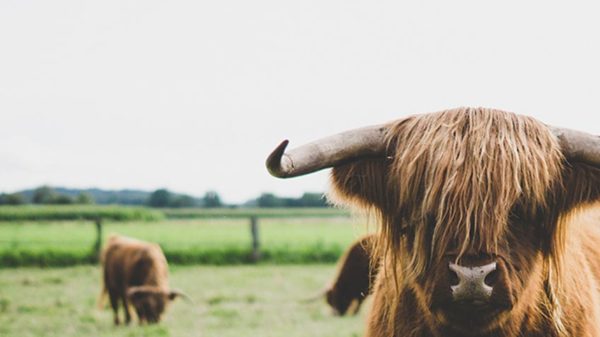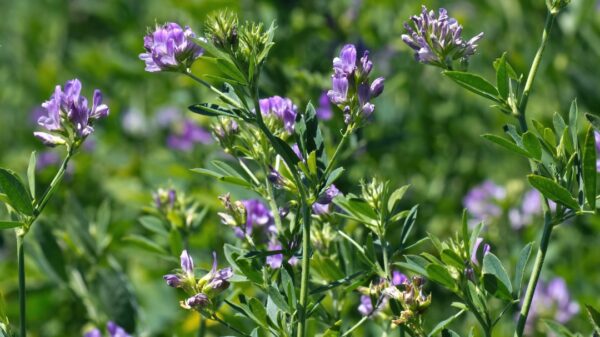Forage Crops
Feeding livestock efficiently and economically is more important than ever. While well-managed grazing practices must be the priority – helping to regenerate our soils, forage crops have an important role to play and with production costs rising, forage crops that you can grow on your own farm can bring many benefits.
Selected with an emphasis on high productivity, yield and strong environmental credentials. Our wide range of forage crops presents the opportunity to improve livestock performance, nitrogen use efficiency and animal health.
Our forage crops are expertly bred by UK and European plant breeders and are commercially field-tested for a minimum of two years before they reach the market. Our collection includes swede, kale, turnips, forage rape, hybrid forage brassicas, forage and catch crops as well as environmental stewardship mixes and it’s our continued mission to invest in research and development to ensure we keep innovating and improving to increase our offering and meet the challenges our farmers face.
Whichever option you choose, it will help reduce feeding costs, extend the grazing seasons and provide an excellent break crop and entry back to a grass reseed. Whatever livestock you farm, planning a forage crop programme is crucial, and identifying your feed demand requirements by month will help you decide which crop species is most suitable for your farming enterprise.
Forage Rape

Licapo
A high yield variety with good leaf to stem ratio. Good disease resistance. It is low in erucic acid and low in glucosinolates.
Kale


Lucerne

Lucerne
UK livestock farmer are now showing interest in Lucerne, it has the potential to provide yields of 10-15 tonnes of dry matter per hectare. Lucerne is highly digestible, with high protein, rich in trace minerals and is an excellent source of fibre. With the added advantage being a legume, it will fix nitrogen too.
Typical silage analysis
- ME 9.7-11.1MJ/KG/DM
- Crude Protein 16-24 %
- D-value 70D
- PH 4-4.6
These nutritional values will save on farm imported proteins.
It is typically grown as a stand-alone crop, and usually grow for silage, but it can be grazed. With good management practices it will persist for 5-6 years. Modern varieties have been selected for their suitability for the northern European climate and are therefore suitable for the UK. Lucerne will leave considerable residual nitrogen allowing following crops to thrive. Lucerne suits most soil types however, it prefers soils that are well drained, a pH between 6.2 and 8.5 (ideally pH7), and where perennial weeds are not an issue.
Lucerne can be grown successfully with grass as a mixture. During drought periods as we have experienced of late in the UK and due to Lucerne’s drought tolerance, dry matter yields from grass and Lucerne mixtures have been several times higher than grass alone.
To get the best returns from Lucerne:
- Select a variety that is suitable for the UK
- Time between cuts a minimum of 5 weeks
- Optimal cutting height of 7cm
- Cut when at the flower buds
- Allow to flower once a year to allow nutrients to be stored in the tap root giving winter hardiness and early spring growth.
Sowing Date: From April through the spring. Summer sowing in August and early September will result in heavier crops the following spring.
Sowing Rate: Sowing rate of 8 kilos per acre as a straight stand, or as a mixture 50% Lucerne and 50% Grass up to 70% Lucerne and 30% Grass.
Maincrop Turnip

Green Globe
A soft and easy to eat, Green Globe has good ground anchorage and is suitable for grazing by all types of stock.
Rape x Kale Hybrid

Invitation
With excellent yield potential, disease resistance and palatability Interval is ideal for finishing lambs or dairy cows. Interval is very fast to establish with some crops ready to utilise within 10-12 weeks of sowing.

Pulsar
A New Zealand bred variety which is quick to establish like forage rape but more winter hardy. Ready to graze in 12-14 weeks from sowing
Stubble Turnip

Samson
A large Tankard Shaped variety with purple skin. Very palatable to both sheep and cattle.
Swede

Airlie
A dual purpose variety for human or animal consumption. Purple skinned with cream coloured flesh, this medium dry matter variety has good fresh weight yield & disease resistance.

Kenmore
A bronze skinned, white fleshed variety bred for stock feeding not for culinary use. High yielding, medium dry matter variety with excellent winter hardiness and keeping.

Marian
Another purple skinned variety with creamy coloured flesh, ideal for both culinary use as well as stock feeding. Good resistance to club root and mildew.

Ruta Otofte
An old but still popular dual purpose variety with good mildew resistance. Dark purple skinned with creamy white flesh, Ruta Otofte is popular with sheep farmers